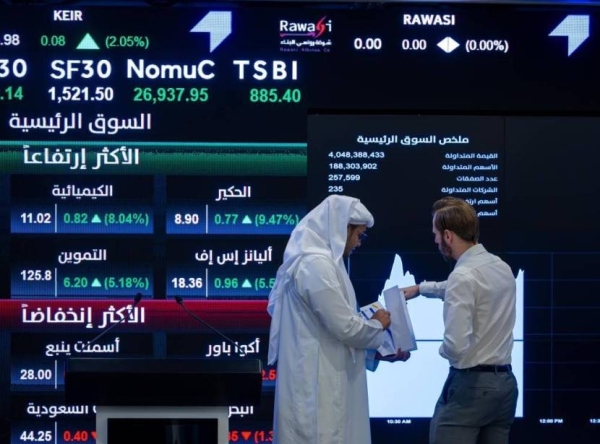The Tadawul All Share Index (TASI), the main stock index in Saudi Arabia, closed the first session of the week on a negative note, ending down 0.2 percent at 11,883 points. The total value of trading also saw a significant decrease, falling by 36 percent to reach nearly SR4.5 billion. Small companies had the highest trading volume at SR 2.1 billion, while medium companies had the lowest trading volume at SR 742 million. The companies announcing their profits in this session showed varied results compared to analysts’ expectations, with only Advanced Petrochemical Company seeing a positive reaction to their results. The company’s shares rose by 1.4 percent after achieving profits that exceeded expectations by 21 percent, driven by strong third-quarter earnings.
In terms of sector performance, six sectors saw gains while the rest experienced declines. The commercial and professional services sector led the rise by 1.3 percent, while public utilities topped the decliners with a 1.5 percent drop. The banking sector had the highest trading volume at SR 699 million. On a positive note, Saudi Aramco and Al-Rajhi Bank both added almost 1 percent each to their stock prices. However, some companies did not fare as well, with Al-Baha being the biggest loser, sliding 7 percent, and ACWA Power shedding 2 percent. Saudi Fisheries also fell by 4 percent after sustaining losses of SR 28.7 million in the third quarter of 2024.
In contrast to the TASI, the Saudi Parallel Market Index (NOMU) posted gains during the day, ending with an increase of 352.19 points to close at 26557.84 points, with a total value of SR 88 million. This shows that while the main stock index may have experienced some losses, the parallel market index fared better, indicating some potential opportunities for investors in the Saudi market.
Overall, the Saudi stock market saw mixed performance during the first session of the week, with some sectors and companies faring better than others. While the TASI closed down, the NOMU index ended on a positive note, suggesting a more diverse range of investment opportunities in the Saudi market. Investors will need to closely monitor company earnings and sector performance to make informed decisions in the volatile market conditions. It will be interesting to see how the market reacts in the coming sessions and whether any positive trends will emerge to drive up investor sentiment.
In conclusion, despite the challenges faced by the Saudi stock market, there are still opportunities for investors to capitalize on the fluctuations and make informed decisions. By carefully analyzing company earnings and sector performance, investors can navigate the market effectively and potentially see positive returns on their investments. The mixed performance of different sectors and companies in the market highlights the need for diversification and a strategic approach to investing in the Saudi market. With the NOMU index showing gains, there may be potential for growth in certain segments of the market, providing opportunities for investors to generate profits in the coming days and weeks.











